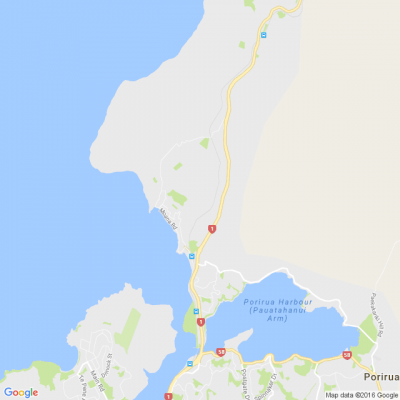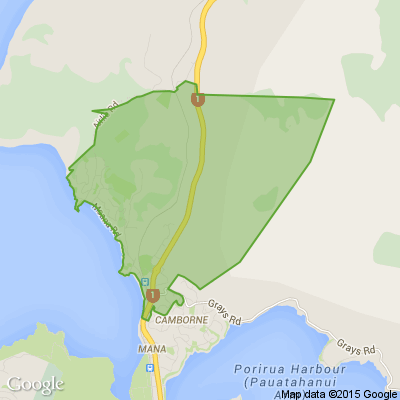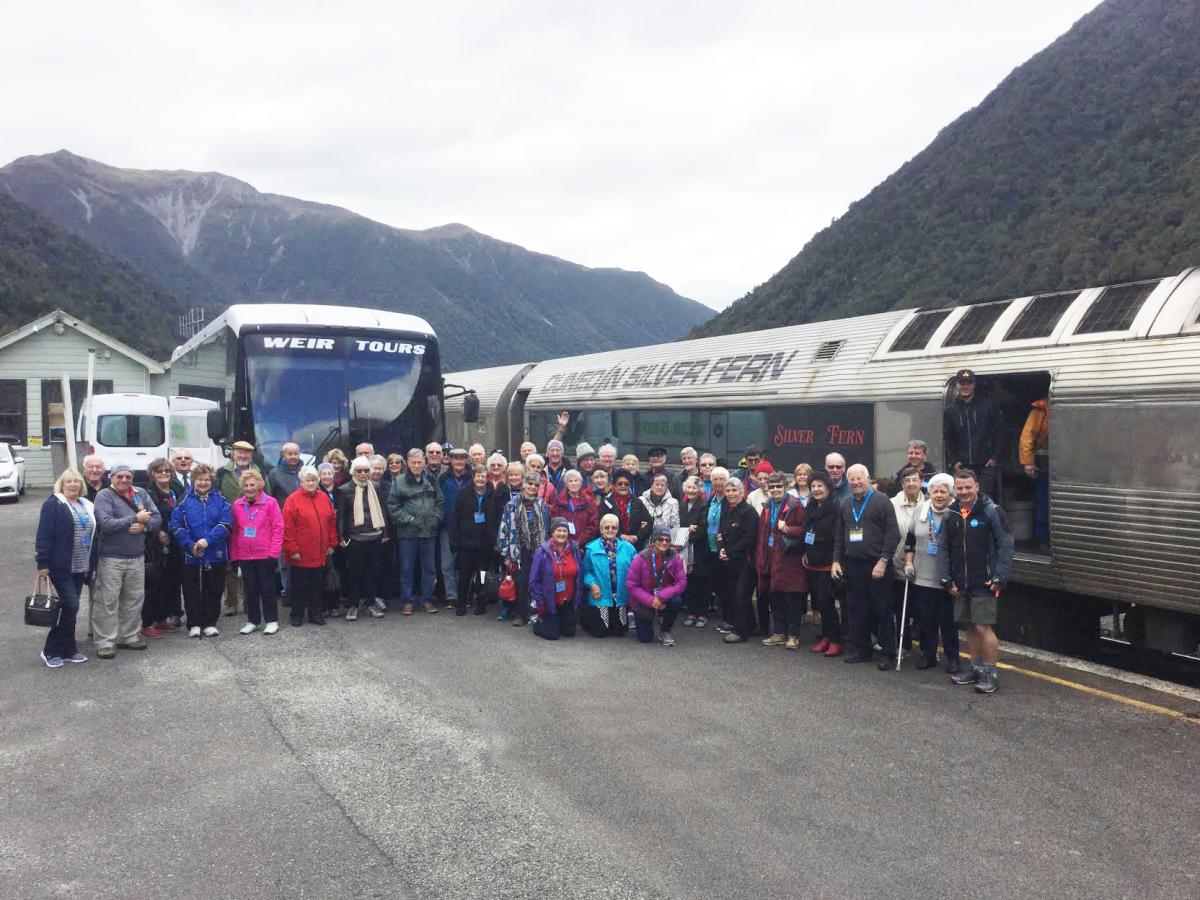
Know what’s happening
Access the private noticeboard for verified neighbours near you. Keep informed about any suspicious activity, send urgent updates to your neighbours when required and discuss emergency planning.
Get to know your neighbours
Browse the directory and start getting to know your neighbours. Don’t want to post to the whole neighbourhood? Send a private message.
Buy, sell and give away
Want to declutter your garage? Buy some used household items? Give away some garden stuff? Become a verified neighbour to browse and post items for sale. Trading is simple when everyone lives nearby.



Thank you for using Neighbourly
You may receive an email confirmation for any offer you selected. The associated companies will contact you directly to activate your requests.
Kelly Dennett Reporter from Sunday Star Times
There is an overwhelming about of information about coronavirus available to us, but which source is the most credible? The Sunday Star-Times is keen to hear about the information you're seeing on social media and how much you trust it. Vote in the poll below, and feel free to email us with … View moreThere is an overwhelming about of information about coronavirus available to us, but which source is the most credible? The Sunday Star-Times is keen to hear about the information you're seeing on social media and how much you trust it. Vote in the poll below, and feel free to email us with any examples of misinformation: kelly.dennett@stuff.co.nz. Our question for you: Do you trust what your friends and family are sharing/saying about coronavirus on social media?
Robin from Plimmerton
We are selling our house. Native trees are a big feature. Our canopy is dominated by kanuka (most of them more than half a century old) and kohuhu and mamaku but there are also, on or just outside the property, specimens of kaikomako, karamu, kauri, kowhai, mahoe, ngaio, pohutukawa, puriri, rama … View moreWe are selling our house. Native trees are a big feature. Our canopy is dominated by kanuka (most of them more than half a century old) and kohuhu and mamaku but there are also, on or just outside the property, specimens of kaikomako, karamu, kauri, kowhai, mahoe, ngaio, pohutukawa, puriri, rama rama, ti-kauka. Lower than the canopy but over 2 metres high and mostly at least 40 years old are hange hange, horoeka, karaka, kohekohe, koromiko, miro, ponga, rewa rewa, rimu, taraire, tarata, taupata, titoki, totara, wharangi, and whauwhaupaku. Several climbing plants, such as the brilliantly-flowering puawhananga, have reached the canopy, and there are several species of ferns, flaxes, and ground covers. We have a productive apple tree and a very productive lemon tree as well as numerous herbs and other introduced plants. Our RV, 6 months old, is $750,000. Sea views include Mana Island, and we have three bedrooms plus office/bedroom. We have chosen an agent but not signed a contract yet.
Negotiable
Triton Hearing is making it easy and affordable for you to enjoy our best hearing technology on a simple, monthly subscription. We call this Pay As You Hear, and it’s a bit of a breakthrough.
Get the world’s best hearing technology on a simple, monthly subscription from $5/Day.
Learn more

The Team from Neighbourhood Support New Zealand
This month is all about bringing your community together and having a great time! We want March to be all about celebrating the connections we have while making new ones along the way. As we all know, what makes a neighbourhood great isn’t the houses and cars, gardens and streets - it’s the … View moreThis month is all about bringing your community together and having a great time! We want March to be all about celebrating the connections we have while making new ones along the way. As we all know, what makes a neighbourhood great isn’t the houses and cars, gardens and streets - it’s the people who share their presence and aroha with each other.
A wonderful way to take part is to participate in Neighbours Day Aotearoa which takes place from 27 March - 5 April. This year’s theme is ‘Small Things Make a Big Difference’ - we couldn’t agree more!
Let us know how you’re celebrating by email or tag us online and include the following hashtag:
#NSNZcelebratecommunity

Community Engagement Advisor from Greater Wellington Regional Council
Kia ora koutou, I’m Kara, and a co-chair of the Whaitua Te Whanganui-a-Tara Committee tasked with making recommendations to Greater Wellington Regional Council on the future of our coastal and freshwater quality, and how our water is used. Our waterways and all the fish and species that live in … View moreKia ora koutou, I’m Kara, and a co-chair of the Whaitua Te Whanganui-a-Tara Committee tasked with making recommendations to Greater Wellington Regional Council on the future of our coastal and freshwater quality, and how our water is used. Our waterways and all the fish and species that live in them are precious taonga, so we have set out to understand how they are valued and what should be done to provide the future we want for our water. I am also a conduit to Taranaki Whānui mana whenua on the Whaitua Committee.
Raised on our whānau farm in Wanui-o-mata, I have always been involved with supporting iwi in their freshwater projects and treaty settlement processes. As kaitiaki of the taiao, our taonga, it is incumbent upon each of us to preserve the integrity of our environment and way of life. This is a journey to save the health and mauri of our waterways, we need to fix urban water infrastructure and more ways to connect with our Wai.
We need to find solutions that are equitable and fair. Doing nothing is an option with our population growing fast and putting more pressure on our waste and storm water infrastructure.
Connect with us to talk about what we can do together. You can reach us at whaitua@gw.govt.nz. To see what we have been doing visit our Facebook page, and to share what you value about our water and your solutions have your say by following the link below.

The Team from Readers Tours
If you have been on a journey with Readers Tours we would love to hear your feedback and share your experience with others.
If you would like to leave a review on Google, please click the link below
Click Here to review > g.page...

62 replies (Members only)
Phillip Harris from Mary Potter Hospice
The Mary Potter Hospice Shops Annual Clearance Sale is on now*!
Head to your local Mary Potter Hospice Shop for quality, pre-loved goods priced to clear, including $1 deals and $5 fill-a-bag specials.
Sale includes adults and kids clothing, accessories, homeware, bric-a-brac and more. Sale … View moreThe Mary Potter Hospice Shops Annual Clearance Sale is on now*!
Head to your local Mary Potter Hospice Shop for quality, pre-loved goods priced to clear, including $1 deals and $5 fill-a-bag specials.
Sale includes adults and kids clothing, accessories, homeware, bric-a-brac and more. Sale ends Saturday 14 March. (*all stores excluding Cuba Street, until stocks last)
Porirua Hospice Shop
21 Kenepuru Drive, Porirua
04 237 2313
Monday to Saturday 9am – 4pm
Turning second-hand goods into first class care.
Find out more

The Team from Wellington Water
We recognise that some in the community are extra concerned but want to reassure everyone that the recent temporary water quality warning for Titahi Bay is not linked in any way to the wastewater treatment plant.
The treatment plant is monitored and operating normally. Addressing localised … View moreWe recognise that some in the community are extra concerned but want to reassure everyone that the recent temporary water quality warning for Titahi Bay is not linked in any way to the wastewater treatment plant.
The treatment plant is monitored and operating normally. Addressing localised contamination events such as this is the aim of the proposed roving water quality team that PCC is looking to introduce in the new financial year.
Are you an aspiring or established travel videographer looking for a bigger platform to share your content? Imagine having your video shared on New Zealand's largest news website, and winning a once-in-a-lifetime trip to Europe.
Entries are now open for … View moreAre you an aspiring or established travel videographer looking for a bigger platform to share your content? Imagine having your video shared on New Zealand's largest news website, and winning a once-in-a-lifetime trip to Europe.
Entries are now open for Stuff Travel's first video competition.
"We want to see videos that inspire others to travel, be it to a destination in New Zealand or anywhere in the world. We're looking for content that informs, entertains, and is creatively shot," says judge and Stuff travel journalist and videographer Brook Sabin.
Enter our competition and you could win a European U River Cruise worth $12,500 including flights. Enter by 22/3/2020!
T's & C's Apply.
Enter now

Margaret from Titahi Bay
300mm x 300mm Italian tiles - about 400 left, two different shades (as in photos). Come in packets of 11. Heavy and must be picked up.
Negotiable
Rhondda Sweetman from Plimmerton Rotary
'After Jacinda'
Colin James to Plimmerton Rotary, 25 February 2020 [Reworked from original to U3A, Wellington September 27, 2019]
I titled this talk, originally given in September 2019, 'After Jacinda' not because I think the Prime Minister is about to disappear or evaporate … View more'After Jacinda'
Colin James to Plimmerton Rotary, 25 February 2020 [Reworked from original to U3A, Wellington September 27, 2019]
I titled this talk, originally given in September 2019, 'After Jacinda' not because I think the Prime Minister is about to disappear or evaporate or crumple. Jacinda Ardern is far tougher underneath than she looks on the surface and has very strong personal approval ratings. Also, if there is a big global shock before the election on 19 September (will COVID-19 be one?), the 'devil you know' factor will probably work in this first-term government's favour.
Of course, she might be 'gone by lunchtime', to quote someone who was gone by lunchtime. Never say never in politics, I learnt decades ago. But my aim in this talk is to take the wider and longer view than just of one person in one place at one time.
First, look back half a century. I have been doing that in the book I have drafted – my final book which may not be publishable and even if publishable may not be published. It covers 50 years in our politics of the generation born from 1942 to 1961, whom I call in the book the Upstarts – from Sgt Pepper's Lonely Hearts Club Band in June 1967 to Jacinda Ardern's swearing in on 26 October 2017. As a journalist I watched the Upstarts' noisy prancing in 1968 – a Peace Power Politics conference, the Governor-General evading a huge protest by sliding in through a side door to open Parliament – then, from 1969 (aside from four years in London) from the vantage point of the parliamentary press gallery. The peak was from 1984 to 1992 when they dug over the whole policy paddock and sowed new varieties of seeds, many regenerative of the policy ecosystem, some toxic. This was a 'values revolution'. The Upstarts installed their values in place of those of their parents.
I should explain that I chose to push the start point for my Upstarts back to 1942 because, at 3 or younger at war's end their moral, civil, then political development – their 'values' gestation – was postwar. Thus, I am not strictly speaking of the much celebrated and much maligned 'baby-boomers'.
I also allow that there was a long baby-boom 'shadow', or tail, stretching well through the 1960s, as demographer Ian Pool has argued. So I start the next cohort in 1969. It used to be called the 'X generation'. Then came the 'Ys', born around or after 1979. Jacinda Ardern was born in 1980. And I allow that some born in the five years before 1942 were more in tune with the Upstarts' values than the values of their parents.
My choice of Jacinda's accession to the ninth floor as the Upstarts' endpoint is not a statement that the Upstarts are dead and buried. Otherwise I would not be standing here. Winston Peters, born in 1945, is Deputy Prime Minister. David Parker, born in 1960, is a key figure in the cabinet: Attorney-General, Minister for the Environment and Trade and Export Growth, Associate Minister of Finance and, until June last year, also Minister of Economic Development – an impossible workload which he somehow carried. The Labour party's deputy leader, Kelvin Davis, was born in 1967. A number of other ministers, notably Phil Twyford, Andrew Little and Damien O'Connor were pre-X generation. And most Upstarts and older will continue to vote and are engaged in many ways besides voting. The Upstarts' influence in and on our politics and policy – and society – will be felt a while yet.
But half the cabinet ministers are Xs or Ys, that is, post-Upstart. And, with the exception of Winston Peters, David Parker, Phil Twyford and Andrew Little, the
critical cabinet posts are dominated by X-Ys: Jacinda Ardern herself; Grant Robertson (the real deputy prime minister) in finance; Chris Hipkins in education and state services; Carmel Sepuloni in social welfare; Megan Woods in energy and housing; David Clark in health; James Shaw in climate change. The Upstarts still have a voice but the post-Upstarts, the X-Ys, have the volume and that volume will rise.
Moreover, Parliament as a whole is younger. At the end of the 2014-17 Parliament, 13 MPs were under 40. On election day in 2017 a fifth of the incoming Parliament were under 40: 25 in total. Another 19 were aged 40-45. Those 45 or younger totalled 37%. Add in the older Xs – the 46s, 47s and 48s – and look ahead: the post-Upstarts are almost certain to be a majority by 2023 and possibly after this year's election.
In short, the John Key-Bill English government was the last in which the Upstarts unquestionably ran the show. The 2017 election was the first post-Upstart election – or if you prefer the old terminology, the first post-baby-boomer election.
The X-Ys are the sons and daughters of Upstarts. They grew up in different circumstances from those of their parents'. X-Ys who made it into Parliament almost all went to university and had to pay fees far higher than their parents paid. They were children or teenagers when the Upstarts let rip in government in 1984-92 so have never known the earlier New Zealand Winston Peters yearns to revisit. They have known only an independent Aotearoa New Zealand en route towards a bicultural nation, a morally and civilly liberal society and a relatively lightly regulated, open economy. The Xs can scarcely recall a Parliament not elected under MMP and the Ys have known only MMP.
In short, the X-Ys grew up in a different society, morality and economy from the one their parents grew up in, then radically refashioned. Those different formative influences have sculpted different priorities and ambitions, personal, social, economic and political.
Helen Clark's government searched for a 'third way' that accepted a much more open society and economy and aimed to settle the country down, anchored to a new centre built around and heeding middle New Zealand as it had adjusted after 1992. This 'third way' softened some of the impact of the open economy on the less-well-off and took some small steps on the environment and climate change. Two big innovations were the National Superannuation Fund (the 'Cullen Fund') to future-proof Upstarts' state pensions through the 2020s and KiwiSaver which injected more saving into the provision of superannuation for the X-Ys (and Upstarts). Notably, Helen Clark parked the Greens on the sideline.
John Key and Bill English, both born in 1961, accepted that 'third way' settlement and edged it a bit rightwards: pro-market, pro-business, pro-farmers, pro-better-off-people and wary of too much environmental and climate change action where it added to business, personal or government costs. The main innovation was Bill English's search for a better way of developing social policy and delivering social services, aided by much more, and much more analysable, data. That evolved into 'social investment' which the Treasury, then the present government, have developed into 'wellbeing economics'. Whanau ora, the Maori party's principal contribution while it was attached to National, fitted that rethink and devolution.
In the Key-English government's third term pressures began to build on social services and infrastructure, strained by population growth and Bill English's demand that public servants somehow 'do more with less'. More with less eventually turned
2
into less with less, exacerbated by strong inward migration. When Steven Joyce asserted an $11.7 billion hole in Labour's campaign promises in 2017, he knew what he was talking about: it was the shortfall in the National-led governments' funding for health, education, social housing, law-and-order and infrastructure. Had Bill English been able to put together a fourth-term government with Winston Peters, that funding shortfall would have become increasingly, and damagingly, apparent.
In about the third week of July 2017, as Labour was sliding ungracefully down the polls, Grant Robertson outlined to me his post-election strategy: put Jacinda Ardern in as leader straight after the looming election disaster, give her maternity leave to have her baby (at that point still to be conceived), then steam to victory in 2020. That 2020 government would have almost certainly been a Labour-Green government because if Winston Peters and New Zealand First had been locked up in a declining fourth-term National-led government New Zealand First would almost certainly have crashed under the 5% threshold in 2020.
You know what happened. Before I could muse on Grant's strategy in a column, Jacinda Ardern was rocketed into the leadership and generated a gush of enthusiasm and relief which got Labour to 37% and into government. That was the most extraordinary election of the 16 I covered as a journalist starting in 1969. And, no, I will not be covering the one in September.
As I noted above, the resuscitated Labour party, then government, was commanded by people younger than, and different from, the Upstarts. But what would these X-Y post-Upstarts do differently?
Jacinda Ardern stated at her election campaign opening that climate change was 'my generation's anti-nuclear moment'. In the Speech from the Throne in November 2017 she said she would head a 'government of transformation'.
Those two statements evoked 1984. As Sir Geoffrey Palmer exhaustively chronicled in his 'memoir' in 2013, not to go anti-nuclear was not an option for the 1984 government. The Labour party would not have worn it and expectation of it was growing in the population at large. But anti-nuclear was just a start. As Sir Geoffrey makes clear in his detailing of the astonishing breadth and depth of the policy change, he and his colleagues were bent on transformation – of policy and the country. When National swamped Labour in the 1990 election Ruth Richardson and Simon Upton drove the transformation on: hence the 'mother of all budgets' in 1991, the conversion of hospital boards into companies (likewise the dismembered bits of the Department of Scientific and Industrial Research), the near-total deregulation of workplace rules (a fixation of Jim Bolger) and the carry-through into law of the world-leading Resource Management Act Sir Geoffrey had drafted.
These two frenetic governments left behind a freer, more open society and economy, a more independent and bicultural country and also a much more unequal one. That inequality has become embedded into a third generation, at substantial social and fiscal cost.
Is this the sort of fast, deep change Jacinda Ardern had in mind when she talked of transformation?
Take tax. No tax on the income from capital gain, which privileges some, mostly better-off, income earners. Little so far on environmental taxes to replace some income and consumption tax – that is, taxing pollution, damage to the environment and conversion of the 'commons' into private profit. Jacinda Ardern declared there
3
was no mandate for tax on capital income and said while she is Labour leader she will not revive the idea. In effect, she said she will not try to build a mandate. Contrast Roger Douglas's determined, sweeping tax changes in 1986 which did actually get backing from a sceptical Labour conference and an increased vote in the subsequent election.
Alongside tax take welfare. The response to the welfare working group report last year was modest. And because tax and welfare were sent off to separate working groups, the tangled muddle of tax, benefits, rebates, special allowances and phase- downs endures at the bottom end of the income and benefit scale.
Take education. Chris Hipkins' changes are supposed to set us up for the 'future of work' in the 2020s on which Grant Robertson ran a 'commission' in 2015-16. But Chris is more adjusting the 2010s system than building a system for the digitised 2020s where 'work' will be different from what we knew in the twentieth century. His solution seems to be more central control at a time when the need is for individualised learning so people can switch activities as the economy changes – some would say revolutionises – under the impact of digital technology.
And, talking of the future of work, not much has yet been seen of the vaunted 'just transition' to better, greener, more reliable employment and income. There is a Green Investment Fund but it is not swamped with investments.
Take Jacinda Ardern's 'anti-nuclear moment': climate change. Two and a-half years in there is at most a gentle push towards electric cars. There is no push to solar panels, no push on office and other big building heating systems, next to no push on industrial processing. There has been legislation which set targets for net reduction of greenhouse gas emissions (note the 'net') and a climate commission to generate 'budgets' that will see us to those targets – if future governments agree and then carry through. How animal methane will be dealt with has been pushed out half a decade. There is no true cross-party consensus. So businesses, local councils and citizens remain uncertain about what to do and when to do it. And, given that we are going to have to adapt to the effects of climate change because governments around the world are not doing enough to contain it, we are still some way short of a strategy to prepare or adapt. Adaptation needs to include managed retreat for 'climigrants', those who will increasingly be affected (though a start has been made on assessing the risks and options). Just don't buy a house in south Dunedin or a farm on the northern Hauraki plains.
Yet a climate mandate is evolving. Even the United States public, which installed a climate change disbeliever as president in 2016, is agitated. Polls there show around two-thirds thinking climate change a 'crisis' or a 'serious problem' and within that number is an endorsement of Jacinda Ardern's 'my generation's anti-nuclear moment': the young are significantly more likely to say it is a crisis or serious. My grandson is very clear on the issue and grumps about what we Upstarts are leaving behind. Schoolkids hold climate strikes. Greta Thunberg is a major global figure – at 17.
Climate change minister James Shaw, co-leader of the climate change party, the Greens, explains his failure to get urgent action on this 'crisis' in three words: New Zealand First.
Which brings us back to Jacinda Ardern. She has been determined to operate by government consensus. So any significant decision has to be worked through with both governing partners but particularly with New Zealand First – even if the topic
4
was not a factor in the coalition negotiations. Tracey Martin is New Zealand First's go-between. She brings to any discussion a 300-page summary of New Zealand First's pre-election positioning which she pulled together for the coalition negotiations. And even when she is able to reconcile a government position with those 300 pages, she can be gazumped, as in her caucus's very late undermining of the agreed stance on abortion reform last year.
One result of the Prime Minister's accommodation of New Zealand First is that the government doesn't stray too far from middle New Zealand where New Zealand First is anchored (or hopes it is) – and where most voters are. A second result is to strain Green rank-and-file support for the Green leadership. One cabinet minister said last year there will be no new major initiatives this term beyond what is already in train.
So, transformation? Hmmm. But hang on a minute. The government is not yet two- and-a-half years old. The real test of any government is its second term. So if there is a second term maybe there will be more action on tax, climate change, the future of work and so on.
And there is one dimension of this government which does hold promise for a second term, though promise is not assurance.
This is the first government to take mental health seriously. It puts that alongside a focus on children, who are our most important investment for the future – the most important infrastructure, you might say. And those are just two elements in what amounts to an attempt to reframe the way policy is thought, developed and delivered.
This is called 'wellbeing economics'. It comes out of work the Treasury started doing in 2014, building out from, and trying to operationalise, its 'living standards framework'. This was a lurch too far for Bill English, the developer of 'social investment'. And initially Jacinda Ardern and Grant Robertson stared blankly at me when I started recounting to them in 2015 and 2016 what the Treasury was doing. Then gradually a little light went on. By the time the election came, they were on board with this remarkable Treasury revisionism.
'Wellbeing' measures government success, including economic success, not just by how good the government and national accounts and economic output are but also by how well are our natural resources, our social cohesion and our human capability. That is now being written into the Public Finance Act. The idea of wider measures is not new: the Organisation for Economic Cooperation and Development (OECD) has been working on it for years and has produced a cross-country better life index on which the Treasury has modelled its own living standards index to measure wellbeing. What is different is that this government is trying to live by this doctrine. There is growing interest from academics and governments abroad in what the Treasury and the government are trying to do.
Few people measure the value of their life by money alone. Most also bother about how they get on with their neighbours, how well they are, whether their kids are doing well at school and whether they can swim in their favourite river. 'Wellbeing' makes logical sense. Of course, having enough to eat and a good house and the income to deliver both and a bit of fun besides are core to 'wellbeing'. But they are not the whole of wellbeing. If too many kids get a bad start in life and don't end up as productive citizens (and so taxpayers) and end up instead on benefits and, too often, a charge on the health system or in our mental asylums, known these days as prisons, that ultimately reduces everybody's quality of life and material wellbeing.
5
To do wellbeing requires a very different way of developing policy. Bill English was edging towards it by trying to get government agencies to focus on outcomes, not outputs, and to work through this in a CBAx (cost-benefit analysis plus) system which required longer-term aims and measures, signed off by agencies' external science advisers. Damned hard to do. And that's not all. Outcomes (as distinct from simple 'targets') almost always involve more than one government agency, often several, and often not-for-profits as well. So to develop real outcome-based policies requires joined-up, multi-agency bids for funding – which in fact was the case for some bids in the 2019 budget round. Multi-agency mechanisms have to be developed to deliver the services and account for the money spent. Also damned hard to do. A bill reshaping the public service is aimed at doing this but is likely to fall well short in practice.
One innovation, which began in 2016 under Bill English, is a family and sexual violence 'joint venture' which attempts to coordinate the work of 10 departments and umpteen not-for-profits. Fiona Ross, formerly a Treasury Deputy Secretary whose degree is in art history, was made head of this unit in April last year. It is still finding its feet. Whether it works or not, we will not know for five years or more.
The same goes for getting rigorous numbers against which to test the government's success or failure in the environmental, social and human capital spheres. The numbers in the Treasury's index are just a start. Getting good enough numbers to stack up beside the economic ones will take five to 10 years – if, in fact, they can be found. Subjective measures and proxies will not convince the sceptics and for 'wellbeing' policy to be successful and durable, the sceptics will need to be quietened.
Which brings me back to my title: After Jacinda.
If National regains the Treasury benches in September 'wellbeing' is tossed. A range of other policies of this government will stop or slow or be subjected to tougher budgeting. While National now has X-Ys as leader and deputy leader, it is in look- back, not look-forward, mode: not reform and certainly not transformation.
More likely – though this is my instinct, not a forecast – Labour will lead the government after September. Might Labour and the Greens have a majority whether New Zealand First is in Parliament or not? That is doubtful but even if so, if New Zealand First is in Parliament, I expect Jacinda Ardern to want it in the government. But if the Greens have more votes, it would be time for Sir Winston to go to London. Then Labour could – though rarely – face down New Zealand First's blocking, derailing and diversion of policy initiatives.
But let's imagine there is just a Labour-Green majority government. In terms of getting things through Parliament it could conceivably take long steps on taxation (more environmental taxes, offset by lower income and consumption tax), on climate change (a speedup of initiatives and real work on transport, buildings and industrial processing and even methane) and on 'wellbeing' – improvements in health, housing, education, welfare, justice and prison reform and on 'pre-distribution', an extension of the living wage to contractors, then suppliers to the government. Plus the coming to fruition of the first term's reorientation of infrastructure investment.
The important word in that list is 'conceivably'. Even if Labour and Greens have a majority, then, leaving aside the impact of a shock (which I will come to later), there would be a constraint: Labour's reading of the impact on its vote of the impact of its policies on middle New Zealand. And the evidence in this first term is that that would be a material constraint. Recall Jacinda Ardern's comment about having no mandate
6
for tax on capital income and by implication no intention to try to build such a mandate. Would she build a mandate for urgent action on climate change?
I doubt it. The X-Ys are fixit reformers, not revolutionaries as were the Upstarts. The X-Ys' difference with their parents' values is not as great as the Upstarts' difference with their parents', which amounted to overthrow. So a second term of Jacinda Ardern, Grant Robertson, James Shaw and Co would more likely be more fixit reform than a policy excursion into new territory. Whether that is a good thing is for voters to decide, not me here.
What I can say is that there is something in that restraint. The mood of middle New Zealand is for some fixing up, not radical initiatives. We are in a little bubble of reasonable economic performance and relative social and political calm – quite the opposite of the disturbed societies and politics of Europe, the Dis-United Kingdom and the Dis-United States. Those are not conditions conducive to urgent or proactive measures. Why disturb the calm?
But I detect more vibrancy in the 15s-30s, who will become a force over the next decade and a-half or so as they push up against the X-Ys. Small indicators here are last year's schoolkids' climate strikes, the Ihumatao occupation (some think this is a pointer to a different era for the Treaty of Waitangi) and teens and 20-somethings in council seats. Abroad it has been evident strikingly in Hong Kong and Chile and significantly in Iraq and even Russia. These post-XYs are an echo of the Upstarts in the years before, then during, their 1968 pushy explosions of self-righteous, know-it- all protest and clamour in the United States, France and Czechoslovakia and elsewhere, including here. Those outbursts did not overturn the established order. Richard Nixon, Charles De Gaulle and Leonid Brezhnev asserted control. Here Sir Keith Holyoake and conservative National stayed in charge. Within the Labour party the Upstarts were squashed by the misogynistic old men who ran the party organisation and Norman Kirk was unmoved as leader.
Except that Kirk turned out to be a pivot between the old and the new-to-come-later. In government after 1972 he was conservative on moral, societal and labour and economic issues. That held to the orthodoxies of the 1940s-60s. But he wanted an independent, anti-nuclear New Zealand, canned the Springbok tour in 1973 (after saying before the 1972 election he wouldn't) and talked of 'partnership with Maori' in running the country. That all pointed forward toward the changes that eventuated in the 1980s.
Is Jacinda Ardern similarly a pivot? Is she in effect holding to much of the 2000s 'third way' while pointing toward a 2030s wellbeing-focused, climate-change-active Aotearoa/New Zealand? What comes 'after Jacinda'?
Contrary to some popular belief, history does not repeat itself. But, properly discounted, it can help us ask more searching questions about what is in front of us.
If 'after Jacinda' comes a National-led government in 2020, then, just as Sir Robert Muldoon in 1975 stalled the change toward which the Kirk pivot signposted, so would National stall the changes toward which the Ardern pivot may be signposting. National needs a bit longer to get in 2020s mode. In that event of a National government from September, Labour without Jacinda Ardern would likely languish because it has yet to rebuild a strong social foundation as, to use Grant Robertson's words the Monday after the 2014 election, 'part of the communities we live in' – that is, build deep, wide roots through society. Also, like social democratic parties
7
elsewhere in liberal democracies, Labour has yet to compellingly update, adjust or restate its century-old ideals and ideology.
But that is the short view. After Jacinda Ardern come those younger cohorts now in their teens and twenties. And they are restive. The activists among them, who seem to be growing in number and voice, want major social and environmental policy change. They are an echo of the Upstarts in the late 1960s.
Take climate change. For most over-50s action on climate change is a 'yes, unless' matter. 'Yes, something should be done, unless it costs me too much or otherwise disturbs my life too much.' For most under 30, and more particularly for those under 25, it is just 'yes': a matter that has to be dealt with, the urgency growing with every passing half-measure. For them 'unless' is 'unless something is done, and quickly, there will be disaster for me and my children'.
Of course, the post-X-Ys have not invented agitation for action on climate change. Plenty of over-50s and X-Ys are on the case. But nor did the Upstarts invent opposition to sport with South Africa and nuclear weapons. Those movements were started by pre-Upstarts in the 1950s. But it was when the Upstarts populated, then took over, those and other movements for change that they developed unstoppable momentum. It is the post-X-Ys who will build the mandate for big change, if there is to be big change (and note that 'if'). They are starting in Jacinda Ardern's time and some X-Ys are with them. But their real time comes 'after Jacinda'.
The Upstarts were of a mind for big change. That was the endogenous factor. But there was also an exogenous factor adding impetus: global events and shocks in the lead-up to 1984 strained New Zealand's international connections, the economy and society.
If anything, there is far more of that sort of exogenous impetus building as we enter the 2020s. A short list: China flexing its economic, technological and military biceps; the Middle East in fragmentary turmoil, Russia aggressive and autocrats abounding; the United States struggling through its decline of empire, echoing a very sad and punctured Britain; $US15 trillion dollars on negative interest rates as central banks re- fight past wars, reciting verses from an old testament; the distortion of materially enhancing Schumpeterian capitalism into reclusive rentier capitalism; water shortages parching widening stretches of the world, notably in India and China; accumulating evidence of climate change damage and acceleration; ecosystem decline; the threat of a pandemic (will COVID-19 be one?) or serious misuse of digital technology or gene editing. The list is long and lengthening. The external threat to prick our little bubble here is growing.
In short, a serious shock is near certain sometime in the next 15 years, probable in the next 10 and possible in the next five. That will grow the basis for radicalism.
So, too, on the plus side, will the digital revolution and genetic and associated technologies. They will reshape or societies, potentially enable wider democratic engagement, improve health care and education and make producing things and delivering services easier and more precise. For our own good, we will need to adapt.
So at some point 'after Jacinda', serious policy change is more likely than not. Some will be by design and some a response to shocks from abroad.
So get set for the 'after-Jacindas'. By comparison the 'actual Jacinda' bubble of moderacy may be remembered as a 'time of mildness and hope' as the 1950s were.

Rhondda Sweetman from Plimmerton Rotary
Would you like to donate some books for a good cause? The Rotary Club of Plimmerton is holding a book fair on the 21st and 22nd March and is looking for books to add to the collection we already have. Please check the poster for details about where books can be taken for collection.

Hi neighbours,
Lotto's $42 million Powerball rolled over on Wednesday night, boosting the prize to $50m on Saturday - potentially the biggest ever.
To read more, click here.
What would you do with $50 million?

76 replies (Members only)
 Loading…
Loading…
Are you sure? Deleting this message permanently removes it from the Neighbourly website.
 Loading…
Loading…

 Auction
Auction



 Marketed by Ben Atwill
Marketed by Ben Atwill

 Price Upon Application
Price Upon Application



 Marketed by Wayne Keats & Kay Ellis
Marketed by Wayne Keats & Kay Ellis
© Neighbourly 2025
